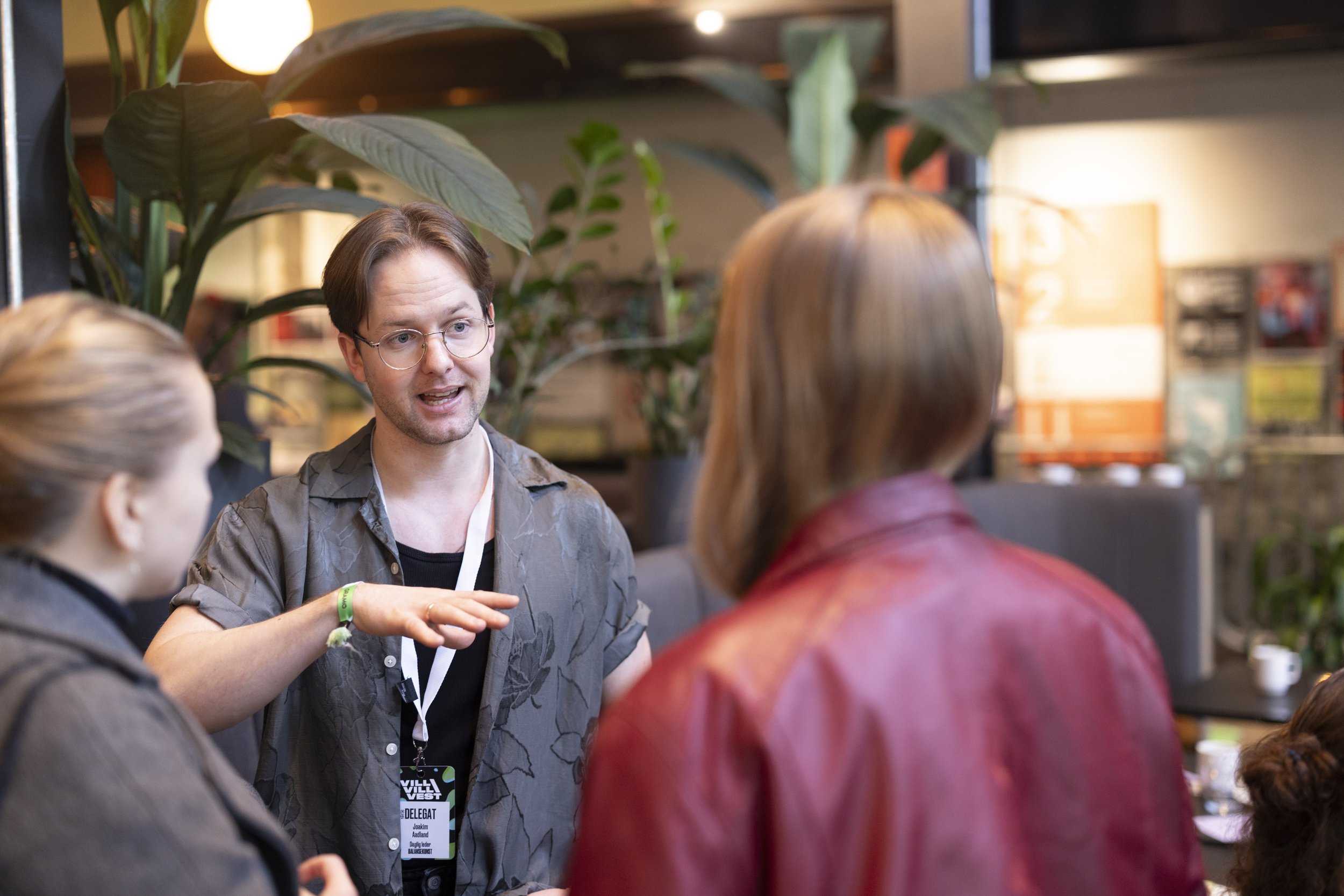What is Balansekunst?
Balansekunst is a membership association for cultural institutions working towards an equitable and diverse cultural field.
Foto: Øystein Haara
Who we are
Here you can find information our employees and board.
What we do
Together with our members, we strive towards creating a safe and accessible cultural environment that reflects society. We do this through guidance, training, advocacy, and our own grant program.
-
We organize gatherings and meetings where our members can network and learn from each other's experiences.
We collaborate with our members on joint events focused on equality and diversity in the cultural sector.
We provide training and guidance to our members in equality and diversity work.
We offer funding for our members' diversity and equality projects through our grant program, Balansepotten.
-
We operate a free helpline providing legal advice to individuals who have experienced or witnessed sexual harassment, discrimination, or abuse of power in the cultural sector.
We advise our members on risk assessment, development of reporting procedures, and internal guidelines.
-
We provide courses on equality and diversity for cultural institutions.
We develop resources to support cultural institutions in their own diversity and equality efforts.
We share expertise through media statements, opinion pieces, panel discussions, debates, and social media.
-
We hold regular meetings with members of parliament, local politicians, and decision-making authorities to highlight both challenges and solutions for a diverse and equitable cultural field.
We advocate for increased financial support for the cultural sector and its own diversity and equality projects through political lobbying.
We participate in hearings and provide input to parliament.
We offer input for national and municipal action plans.
We participate in and organize panel discussions, debates, and conversations.
We raise awareness of diversity and equality efforts in the media through opinion pieces, debates, and interviews.
What we believe
A rich cultural scene requires a diversity of perspectives and voices. It's crucial that the cultural field is perceived as accessible and inclusive for everyone, allowing us to experience art and culture from various perspectives and expressions.
This is what we work for:
-
There are numerous risk factors for discrimination, sexual harassment, and abuse of power in the cultural sector. Every organization should work preventively and take active measures to create safe and equitable workplaces.
-
Why does Norwegian culture fail to fully represent the spectrum of its population? From economics and networks to prejudices, norms, language, and codes, a multitude of barriers shape our perception of what is attainable. Diversity initiatives entail pinpointing the myriad small and large barriers, often subtle, that impede the involvement of certain groups.
-
Working for diversity involves recognizing biases and equality barriers and valuing diverse perspectives and artistic expressions. When we are diversity-conscious in recruitment, we see that having knowledge of, experiences from, and networks in minority communities is valuable expertise. When we are diversity-conscious in the booking process, we see that adding more artistic expressions enriches our program and makes us relevant to new audience groups.
-
Power structures influence our perception of art and quality. Our understanding of what constitutes good art and culture is often shaped by societal norms and personal experiences. If only a homogeneous group of people gets to define what is considered good, interesting, and relevant art, we miss out on greater diversity. To foster a cultural scene with many different cultural expressions and individuals from all segments of society, we must acknowledge how networking culture, power structures, and our own biases serve to exclude certain individuals and voices.
-
Advocating for diversity and equality in the cultural sector does not impede artistic freedom; rather, it fosters favorable artistic processes for all. True freedom encompasses the liberty to create art in supportive working environments, free from discrimination and sexual harassment. To ensure such freedom for everyone in the cultural sphere, we must dismantle barriers that hinder certain groups while also amplifying a broader spectrum of voices.
Our history
-
In 2019, Balansekunst received government funding for the first time to develop "Balansemerket – a certification scheme for a safe cultural environment." In 2020, the association received 2.3 million NOK in operating grants from the Ministry of Culture, which was further increased to 5.6 million NOK in 2023. Since 2023, we have had 6 full-time employees on staff.
-
In 2017, Balansekunst's scope was expanded, transitioning from being solely an initiative for the music industry to becoming a resource for the entire cultural field. Also in the same year, amidst the #metoo movement, Balansekunst began targeted efforts to prevent and address instances of sexual harassment in the cultural sphere.
-
Until 2016, Balansekunst operated as a network. In 2016, it underwent formal establishment as an association to enhance the initiative's structure. That same year, the mandate expanded to embrace a broader notion of diversity, acknowledging that combating gender discrimination requires addressing interconnected societal factors.
-
In 2012, the first Balansekunst conference, "Balanse i musikken" (Balance in Music), was held. A significant milestone occurred the following year when, upon Balansekunst's recommendation, the Norwegian Arts Council established a pilot program with 1 million NOK to support efforts toward achieving better gender balance in the music industry. However, this endeavor was discontinued after a governmental transition later that same year.
-
In 2009, key players in the Norwegian music scene came together to form the "Balansekunst Network," with the goal of advancing gender equality in the industry. The year before, Astrid Kvalbein and Anne Lorentzen, in their anthology "Musikk og kjønn – i utakt?" (Music and Gender – Out of Tune?), commissioned by the Norwegian Arts Council, pointed out a concerning trend: efforts to address gender balance in the Norwegian music industry were largely ad hoc or driven by external pressures, rather than proactive initiatives from within the sector itself. The establishment of the Balansekunst Network marked a significant shift in this approach.

